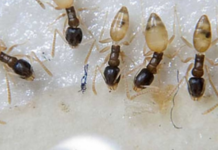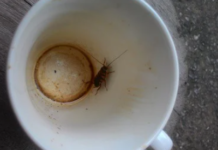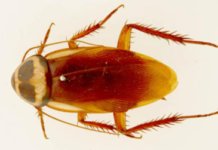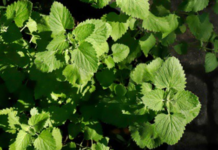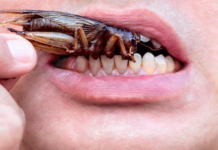Have you ever had any kind of ant bite? How do you identify ant bites? There are many types of insect that can bite causing allergic reactions. Do all ants bites. Learn how to tell the difference between ant bites verses stings and the home remedies to get rid of ant bite. The guide will discuss the treatment options to cure the bites.
Ants and insects in general can cause all sorts of different problems including allergic reactions when they bite. Some can infest your food or even damage structures in your house. While some ants are entirely harmless others can cause a very painful pain.
Normally, ant stings are known to be more painful than bites. Some ants neither bite nor sting but tend to spray formic acid. All these cases, it only happen when you provoke them or when the ants feel threatened. How do you avoid ant bite or sting? How do you tell if you are allergic to bites or not? Are there any natural home remedies for this? This guide will attempt to cover all these in details and more.
What Do Ant Bites Look Like?
Ant bites can be explained as small red marks. More serious cases of ant sting can result to red blisters that appear as pimples. It depends on the species of ants, most people tend to experience one or more of the following symptoms such as burning sensation, redness, mild swelling, dizziness, itching and pain among others.
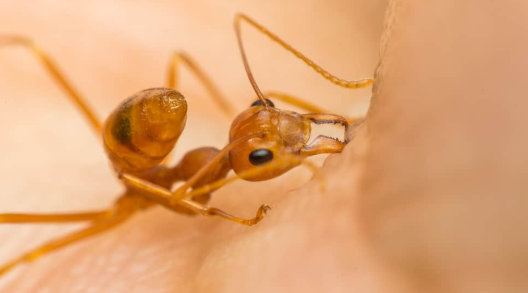
In most cases, when you get bitten or stung you’re likely to forget the bite in a few days. However, there are some bites that tend to stay with you for even a couple of weeks such as the fire ant bite. The good news is that, the bites and stings are not dangerous to humans. In fact, most cases don’t require medical examination or treatment.
In extreme situations, one can only develop allergic reactions to the bites or stings. This only happens at time when one can multiple and simultaneous bites or stings. For instance, a sting from a red harvester ant tend to attack the lymph nodes, and if you are allergic to the venom, it could be fatal.
How to identify Ant Stings
The great news is that, although they are irritating, most of the bites and stings are less harmless other than the pain or itch. It doesn’t matter which species of ants are responsible for the stings or bites, the bite or sting are usually accompanied by pain, redness, burning sensation, mild swelling and itching among others. Most of these symptoms tend to subside within a couple of days.
Types of Ant that Bite
There are a number of different or types of ant bites. It is goes without saying that it is crucial to try and figure out which type of ant has bitten or stung you. While some are harmless, others can lead to some additional health risks.
1. Fire Ant Bites
Also referred to as red fire ants, they are known to be very aggressive type of ant species. They can inflict multiple bite at a time. Fire ants tend to use their mandibles and mouth to attach themselves to the body of the victim and then sting with their stinger. In most cases, they bitten place will develop red welts with pustules. Other than immediate pain or itch, other symptoms may not appear immediately. Is usually takes between 6 and 24 hours. The pustule in some case can last up to ten days. To some individuals, blisters tend to develop.
2. Black Ant Bites
Small or little black ants do not have a stinger in most cases, or it is simple not big enough to cause any bodily harm. In fact, their bites are not usually painful or dangerous.
3. Carpenter Ant Bites
We did mention earlier in the post that some ants do not bite or sting but they spray formic acid when they bite. Carpenter ants are the type of ants that apply formic acid when they bite. You might experience a burning sensation on your skin and redness. Their bite are not really harmful therefore don’t cause any health complications.
4. Flying Ant Bites
Some of the flying ants are known to bite while others tend to sting. But this is very unlikely. It just depend which type of flying ants. Flying ants are generally passive and will only bite when disturbed. In fact, flying ants just focus on reproducing, that is their main purpose.
5. Sugar Ant Bites
These type of ants don sting but can only bit when they feel threatened or disturbed. Unless you are allergic their bites do not show any symptoms. In fact, you might not even feel it when it happens.
6. Harvester Ant Bites
Harvester ants are known to sting and bite simultaneously. These ants tend to use their mandibles to attach onto your skin in order to repeatedly sting you and inject venom. Their multiple stings can cause painful sores.
7. Piss Ant Bites
These types of ants do not cause any harm on human. They cannot sting but only their soldiers can cause painful bites. In fact they apply formic on the skin of the victim.
8. Velvet Ant Bites
They are known with nickname as ‘cow killer’. Just to make it clear, these ants are not really ants. They are wasps with a very painful sting. The area where the sting happens becomes swollen and red. You may develop allergic reactions to the bite. They are considered to have one of the most painful bites. You should try to avoid these types of ants.
9. Pavement Ants Bite
These insects can bite or sting but their stinger is too weak to cut through into the skin. Their bites are not venomous and in most instances, when they bite you don’t feel anything. People with a sensitive skin can develop a rash or skin irritation.
10. Argentine Ant Bites
If you have come across argentine ants, you cannot tell whether they bite or sting. They only bite when they are disturbed but you can’t really feel the pain. These small ants only attack in large numbers. They only risk from them is that can contaminate your food.
11. Crazy Ant Bites
Crazy ants just like many ants’ species bite when attacked or threatened as a defense mechanism. Although they bite feels painful in the initial stages, it fades away quickly. Their strange and unpredictable movement pattern is the only annoying thing they cause.
12. Leaf Cutter Ant Bites
When dealing with these ants’ species, you better be careful. Their jaws can easily cut though into your skin and cause bleeding leaving a wound that can easily get infected. When bitten by these ants, try to disinfect the area as soon as possible otherwise you risk infection.
Do All Ants Bite?
It is important to know the types of ants that bite or sting. We have covered majority of these ants and discussed if they bite or not. This is just a quick summary for emphasis. All ants have a potential to bite since most of them have the type of mandibles to do so. Most will bite when they feel disturbed in self-defense.
While some are aggressive, others are harmless. It doesn’t depend on the size, small or large can still attack you. You have to be on the lookout always especially if you are not sure what type of ants you are dealing with. Here’s a list of those ants that can bite or sting you:
- Red fire ants
- Crazy ants
- Field ants
- Harvester ants
Like we’ve mentioned most ants will attack out of fear. This is their only form of defense and in protection of their colony. It is also important to know that some ants are more aggressive than others. Among other reason why you might end up being attacked is when they mistake your flesh for food.
Ant Bites Vs Stings – What is the Difference?
Is there any difference between an ant bite and sting? What is the difference? It might not be easy to explain but first we all know at least ants have a mouth to chew that can be used for biting. Some of these mouthparts are generally too small to cause any serious harm on people. Most ants’ species have stingers.
The mandibles which are used to bite are found on the head while the stingers are found on most part of the body or at the bottom. It is common for a lot of people to confuse a bite for stings and vice versa. Understand that sometimes the ant can do both stinging and biting.
Ant Bite Symptoms
The symptoms of ant bites can include:
1. Allergic Reaction
There is a high probability for one to develop an allergic reaction from ant bites. Although few ants bites can result to allergic reaction. Some people are prone to allergies if they get multiple ant bites or sting.
2. Ant Bite Swelling
People who develop allergies when bitten or stung by ants are likely to end up with swelling. The place that has been bitten or stung can swell almost immediately or within a couple of days. We have home remedies guide in this post to relieve this symptom.
3. Ant Bite Blister
When bitten or stung by any type of ant, you are likely to end up with a small itchy bump within a couple of hours. The small like bumps or blisters ought to appear as filled with fluid.
4. Ant Bite Itch
It is common when stung or bitten you end up feeling itchy. This can happen almost immediately or within some hours after the bite. It is just a normal reaction and depending on the type of ants, it can last up to 10 days or even longer.
How Long Do Ant Bites Last?
The period for ant bites or sting depends. There is no one particular time for this. This duration depends on several factors. Some people have a sensitive skin meaning they can still feel the bites several days after the bite. In most case though, an ant bite can last 1 or 2 days while it can take up to 10 days feeling other symptoms. So it depends.
Ant Bites Treatment – Remedy
If you don’t develop serious symptoms such as allergy, you can comfortable treat ant bites at home. But if the symptoms begin to get worse or slightly uncomfortable consult your doctor especially if you are not sure what to do.
Treatment of any kind of ant bite depends entirely on the severity of the reaction. While most ant bites don’t pose any serious health risk, treating the symptoms if key. It first starts by removing the ants from your skin. Use soap to wash the affected area to keep the area sterile.
To get rid of the itching caused by an ant bite, you can use hydrocortisone cream.
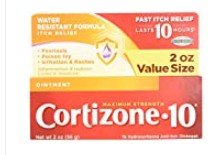
If the sting or the bite area has been opened by scratching, you should use something to prevent infection (like a triple antibiotic ointment, for example).
It is also important to monitor your overall situation. You have to check what is happening on the affected area. If you feel dizzy make sure you are not developing allergies. You may apply cold compress to cool down the area and reduce inflammation. Over – the –counter drugs such as antihistamines will be of help to reduce itching and swelling.
Home Remedies for Fire Ant Bites
Here are few simple home remedies that can be of help to relieve the symptoms in case you’ve been stung by a fire ant.
1. Baking Soda
A paste of baking soda and water can be of help if you get a sting from a fire ant. Make paste of baking soda and apply it on the skin. Leave it for about 10 minutes. Rinse it off with lukewarm water.
2. Apple Cider Vinegar
Apple cider vinegar is also good when treating the symptoms of fire ants stings. Put a cotton swab in diluted apple cider vinegar. Rub it on your skin. Leave it for some minutes then rinse it off.
3. Essential Oils
Any time you think of easing the symptoms of ant bite, think no more. If you can access essential oils then you are good to go. Essential oils such as basils, wintergreen, lavender oil and others can reduce pain, swelling, and irritation on your skin anytime you get stung by fire ant.
4. Run Cold Water
An ant bite can be relieved with by running cold water on your skin. Cold water helps to reduce symptoms such as swelling and irritation.
5. Cucumber
This is another simple but effective home remedy that can help to ease symptoms of fire ant bite. Cut a thin slice piece of cucumber. Rub it on the affected skin.
What to Do to Avoid to the Ant Bites
Ants don’t come to bite or sting human but rather come in search of food. This means if you don’t bother the ants, they won’t be a problem. But that depends on how you feel about them. If you have an infestation of ants, get rid of them as fast you can.
The risk of ant bites increase when you get closer to their colony or when they mistake human flesh for food. Nevertheless, the less you touch the ant bite, the better for you. If you get bitten or stung, avoid popping and scratching the bites, otherwise you risk get infection. If you have to touch or scratch an ant bite, then make sure to try the home remedies discussed above.
There are a variety of gel creams available online that stop pain and itch and help keep the wound sanitized. For instance try this ant bite treatment gel –
Fire Ant Bite Treatment Sting Zapper Gel Cream First Aid –
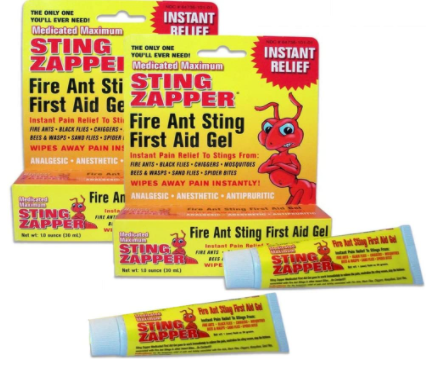
Conclusion
Hope this guide was helpful. We made sure you get to know everything about ant bites including identification, types of ant bites, symptoms, allergic reaction, remedies and treatment. Just like we mentioned earlier in the post, many ant don’t just attack from nowhere. They do so when they feel threatened or disturbed especially in their colony. You can therefore avoid an ant bite or sting.
Unless you develop severe complications like allergies, the treatment and remedies provided herein are effective to ease the symptoms. Whenever, you are not sure what to do, it is advisable to call an emergency.
Sources
- http://extension.msstate.edu/content/the-fire-ant-sting
- https://fireant.tamu.edu/files/2011/12/FAPFS023_2002rev_Medical.pdf
- https://u.osu.edu/biomuseum/2017/03/06/the-science-behind-an-ant-sting–
- https://pestsamurai.com/ant-bites/

